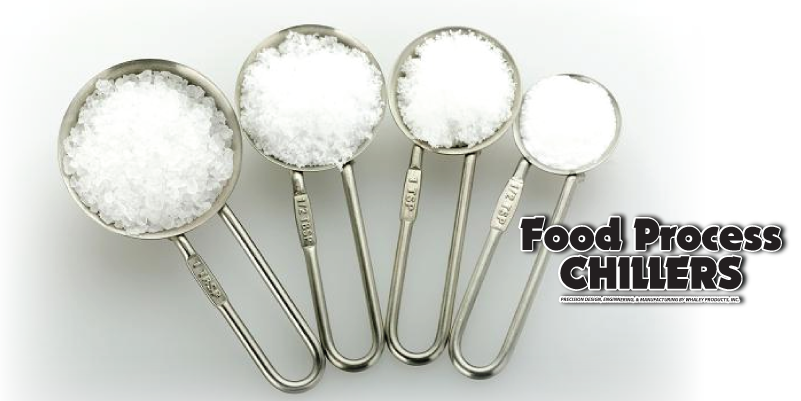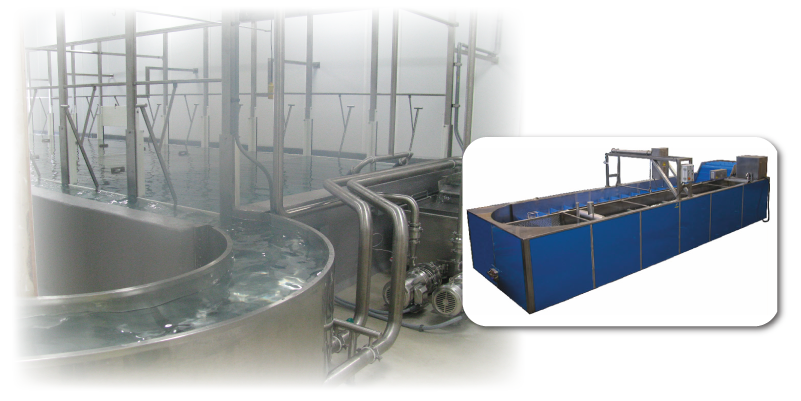Brine Freezers
Brine freezers normally use salt solutions, but glycols and other fluids can be used as well. Liquids flow over the freezing product and circulate through a heat exchanger. Passing through the exchanger allows liquids to give up the captured heat to the vaporizing refrigerant. The cold brine is then pumped into sprayer or immersion tanks where the freezing product loses heat. The brine can be called a secondary refrigerant or a secondary coolant. Most product is packaged when coming into contact with the brine. Sometimes cleaning is required.
Brine freezers can come in different shapes. One type of freezer can look like a box. The box distributes the brine via spray heads. Anti-foaming agents are required for application via spray nozzles. Other freezers can consist of a tank. The tank allows for circulated brine to make contact with product. Agitation, as seen in dairy cooling, can help increase the heat transfer rate.
Different refrigerants can be used in conjunction with water. The list below is describes and explains different solutions
Sodium Chloride – NaCl
- Mix with water at weight a 23.3% results lowest temp point with brine, -6°F
- Keep brine temperatures closer to 0°F, or freezing of tube walls can occur
- Can NOT come in contact with food
Calcium Chloride-CaCl₂
- Can operate at lower temperature than sodium chloride, -67°F
- Keep temperatures at -4°F or brine will come viscous and hard to pump
- CAN come in contact with food
IMAGE (brine2.jpg)
Glycol- Ethylene C2H602
- Greater toxicity in combination with food
- Less viscous that propylene at low temperatures
Propylene C3H8O2
- Freezing point can be -58°F
- Keep temperatures at 0°F or brine will come viscous and hard to pump
Other Brines and Fluids
- Isopar H
- Parather LR useable temperature ranges -40°F- over 400°F
- Expensive (over $1,000 for 55 gallon drum)
- Proprietary liquids made of citrus oil, silicone oil, petroleum other compounds



